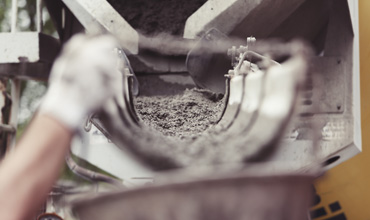
Knowing how long to wait before placing flooring tiles on a freshly screeded surface might be tricky. Unfortunately, there is no conclusive answer because it depends on the type of screed used, the area covered, and the flooring you want to lay. But no matter what, the advice of an expert can help you make the correct decision. West London Concrete, a screed supplier is here to assist you in making that selection.
Screed is a thin layer of material applied on the top of concrete flooring. Industrial screed has a coarser 6-10mm aggregate and is suited for heavier-duty applications. It can be applied on floor slabs to cover structural flooring concrete. The screed can also be used over insulating materials, such as underfloor heating pipes. Screed is used to create a smooth, flat surface to install finishing materials such as flooring, tiles, or carpet. Over a three-metre span, the floor level should not rise more than 5mm.
Screed is used to smooth out a concrete sub-base, resulting in a flat, smooth surface. This enables carpet and tile installation to be done evenly and precisely. It can also be used to conceal pipes and insulation beneath the floor.
When drying time takes longer than intended, building work can suffer. Work can be carried out and completed promptly with a quick-drying screed supply. It is possible to lay floors swiftly, efficiently, and uniformly. Work schedules can be kept on track. In terms of time restrictions, workers are put to stress.
How can one tell if the screed floor is ready to tile, carpet, or install a new laminate floor? The amount of time you wait for the screed to dry completely depends on what you're going to put on top of it. Typically, for every centimetre of screed (thickness) up to 4cm, you should wait one week, and for every extra centimetre of thickness, you should wait twice as long (up to 6cm). You should wait four weeks for every extra centimetre of thickness over 6cm. It will take a long time for all moisture to travel from the bottom of freshly put screed to the surface.
Cover it with plastic foil first if you're placing laminate panels over a spanking new screed floor. Plastic foils or something similar may be integrated into some laminate panels. Before tiling can begin, the screed must be solid enough to walk on. It could take up to three days, depending on the thickness of the concrete, and the concrete foundation should be at least a week old. Before beginning work, make sure the substrates you intend to tile are clean and dry, paying special attention to movement joints and if they're properly stated.
Lay the tiles out with roughly 3mm wide joints to allow grouting and movement. After the tiles have been installed, grout the joints and use silicone to fill the perimeter movement joints. To prevent mould from growing due to rising moisture, the carpet must be as dry as possible before being laid down. The screed should be cleansed and free of impurities once it has dried (such as oils, grease, or polish). Concrete screeds should not have holes, chips, or cracks and should be structurally sound. If the screen is damaged, use an approved levelling compound at least 3mm thick to repair it.
West London Concrete is a leading screed supplier, providing high-quality concrete materials to both household and commercial customers. Our exceptional floor screed service includes mixing and delivery, allowing you to achieve the ideal surface for your concrete flooring. We offer same-day or next-day delivery of our floor screed, providing you with high-quality, ready-mixed, or onsite mixed materials. Once an order has been placed, we can even offer two-hour delivery intervals, allowing you to plan for the arrival of your concrete.